Steroids
Top 10 Sports where Players Use Steroids
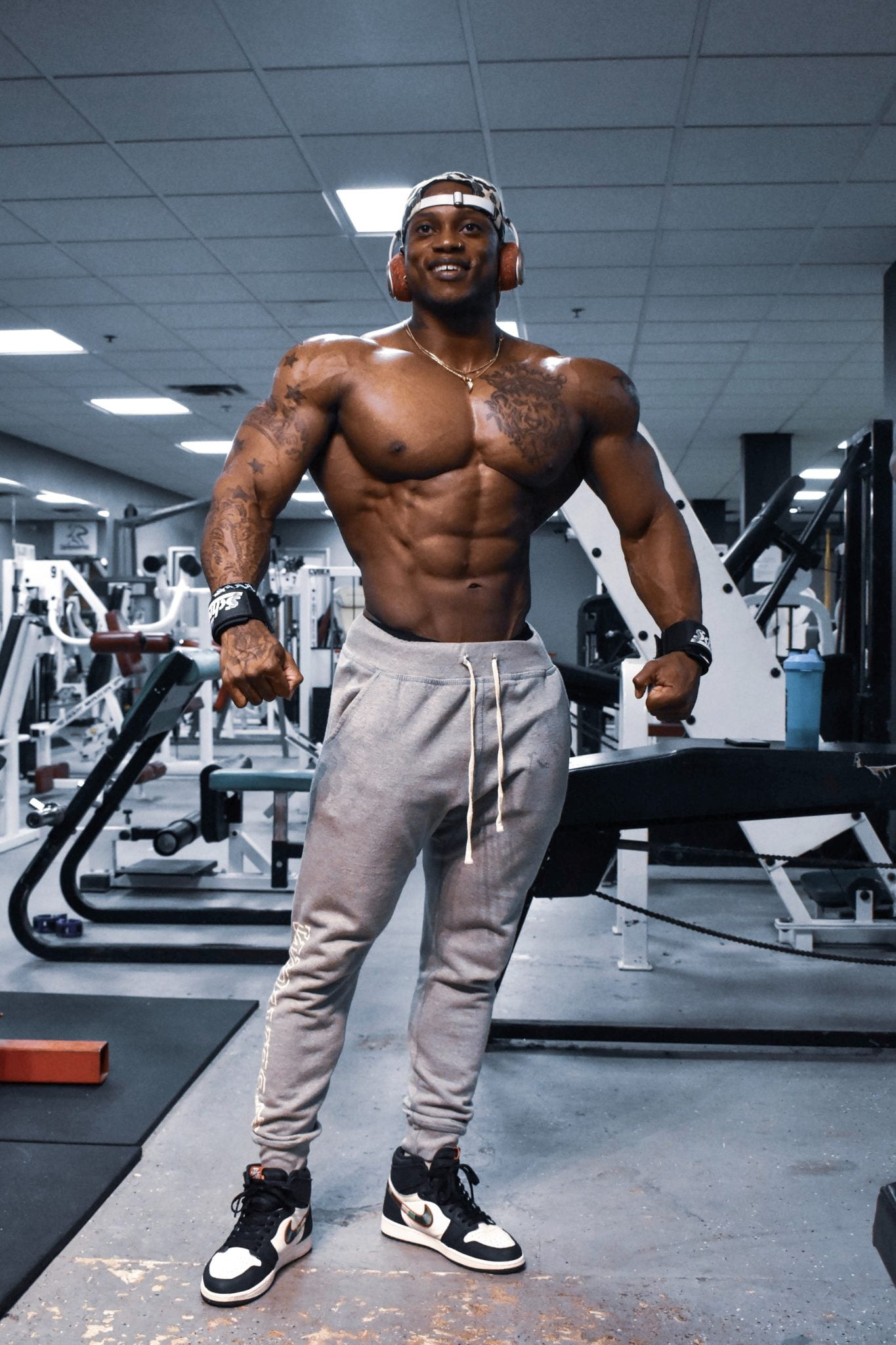
Sports players are always prepared to win individually or as a team at all costs. The pain of losing is unbearable, sometimes. Sportsmen and women participate in their respective sports at the local, regional, national, and international levels for different reasons. While some do so to satisfy themselves, most compete for fame and recognition. The latter group of athletes is prepared to do anything to succeed in the competition. Anything that will put them in front of the eyes of the world is an option worth exploring. And it comes with humiliation and loss of morale. Although doping, better known as the use of performance-enhancement drugs, is illegal in most sports, players continue to do it. We are going to look at steroids in sports in this article.
Steroids in Sports
Anabolic steroids refer to roids, pumps, hype, and juice in sports. Although many people view steroids to be generally illegal, they are, in fact, powerful prescription drugs—most anabolic steroids are derived from testosterone. When not misused, anabolic steroids sometimes treat specific disorders, including managing cancer forms. On the other hand, it can be fatal, so their use has not been given the green light by most governments and organizations. Consequently, steroids are prohibited in most sports because they are harmful and give users an unfair advantage over the rest.
We don't know the exact number of athletes who use steroids, but we know sports where they compete. We also know they are many, even though most of them have not. Some are in contact sports, while most are on track. Although sports regulatory bodies have tried to crack the whip on steroid-using athletes, they have not eliminated the vice. Somehow, athletes are still finding ways to cheat their way to victory.
Must Read:: The History Of Steroid Use By Athletes
The top 10 sports where athletes use steroids:
Baseball
Baseball players have used steroids to enhance their performance for many years without being detected. However, before 1991, there was no clear rule prohibiting doping in baseball, so we cannot say the players broke the rules.
In the years that followed, I discovered that the prevalent use of steroids in sports gave some teams and players an upper hand. Consequently, the use of steroids in baseball was banned in 2005. Since then, there haven't been many steroid use cases reported, but the players keep using them. The BALCO Scandal of August 1, 2005, involving baseball player Palmeiro, saw the Major League Baseball Players Association call for stricter regulations on doping in baseball.
Track and Field
Doping in Olympic games started as far back as the 1968 Summer Olympics when Hans-Gunnar Liljenwall, a Swedish pentathlete, tested positive for PEDs (Performance Enhancement Drugs) alcohol. As a result, she lost her bronze medal and became the first athlete to be punished for doping. Since then, athletic regulatory bodies have tightened the rope on doping to ensure everyone's level playing ground. However, athletes continue to invent new ways of cheating the system and performing beyond their natural abilities.
The fight against doping at the Olympics was derailed by sabotage. It happens in and without the International Olympic Committee (IOC). For instance, the KGB was accused of posing as anti-doping authorities to undermine doping tests on Soviet athletes in the 1980 Summer Olympics. It was not until the 1990s that the IOC started taking a more organized approach against doping in athletics. The new regulations saw the introduction of efficient testing methods and harsher punishments for athletes who used doping substances. Some of the steroids in sports that the International Olympics has banned
Committee includes:
- Stanozolol
- Mibolerone
- Boldenone
- Oxandrolone
- Danazol
- Trenbolone
- Methasterone
- Bolandiol
- Furazabol
- Norclostebol
Bodybuilding
Bodybuilders use anabolic steroids for two main reasons; to build muscle and recover from injuries sustained much faster. Although there are no tight regulations against steroids in bodybuilding, the drug's side effects are not hard to notice. Bodybuilders rarely seek treatment when affected by steroid use, which is partly why data on steroid use in bodybuilding is scarce. Additionally, bodybuilders tend to distrust professionals when it comes to steroids. All in all, steroid use is very much prevalent in bodybuilding despite the adverse side effects.
There have been calls to test for steroid use during major bodybuilding competitions, such as Mr. Olympia, but the National Physique Committee has been reluctant to heed those calls. Somehow, bodybuilders are more responsible for steroid use than in other sports, which is not prohibited. Additionally, steroids help bodybuilders burn fat and build more muscle.
Basketball
The use of steroids in basketball has been ongoing for some time now. For instance, the National Basketball Association (NBA) has seen a sharp rise in suspensions due to substance use. However, the most abused performance-enhancement substance by the new generation of NBA players is not a steroid. The latest breaks are due to the growth hormone, Ipamorelin. The hormone helps players reduce fat and increase lean muscle. Chandler is the latest high-profile NBA player who did for using the substance.
Regarding steroids, basketball players use them to increase their muscle mass and overall performance. The NBA first came up with an anti-doping policy in 1983. Since then, players caught using outlawed substances have between 5 and 20 game bans. Other notable NBA players to test positive for performance-enhancement substances, precisely steroids, are Don MacLean and Matt Geiger.
High School Sports
If you think steroid use only happens in professional sports, think again. The fact is that steroid use occurs at the high school level, where participants use them to shine in their respective fields. Sometimes the young lads face tremendous pressure that pushes them to take shortcuts. You may wonder where these youngsters got to know about performance-enhancement substances. In a world where information moves thousands of miles in the blink of an eye, I wonder no more. Social media has been particularly central in exposing high school students to substance use, including anabolic steroids. Furthermore, most teenagers who want to pursue careers in professional sports do anything at an early stage.
Steroid use in high school games continues to take a toll on the competition because they rarely test players. For example, in the United States, only 20% of schools test their players for PEDs before sending them to competitors.
NFL
Steroid use in the National Football League sometimes started before 1987. Currently, the sport's governing body prohibits all performance-enhancement substances. NFL tests players for substances such as steroids once per season.
Those found to have been using them are banned for a minimum of 4 games. Although the body regularly increases the number of random tests every season, anabolic steroids have doubled since the 90s. Anabolic steroid use is seen in professional American Football and high school and college football. Richard Sherman was the most prolific NFL player to test positive for PEDs. He subsequently made a successful appeal that saw him avoid a 4-game ban imposed by the NFL.
Soccer and steroids in sports
The football association has not seen widespread steroid use, but we cannot say it is not there. It is more of a case of missing evidence rather than no use. The late Argentine soccer star Diego Maradona used cocaine later in his soccer career, especially in Napoli and Barcelona. Lately, soccer management bodies are putting more stringent measures to control the use of banned substances in the beautiful game. That includes furthering PEDs investigations among players, improving data collection strategies globally, and developing effective detection techniques.
Before the 2006 FIFA World Cup, the soccer management body ratified the World Anti-Doping Agency (WADA). However, FIFA has not put strict measures in place to battle the use of performance-enhancement substances. It only applies a 2-year ban on soccer participants found to be using prohibited substances. In the 2010 FIFA World Cup run-up, WADA announced that it would increase offenders' punishment from a 2-year to a 4-year ban.
Cycling
Widespread steroid use in cycling was first witnessed in the 1970s. Unlike in most sports, where performance-enhancement drugs are used to build muscle, steroids improve cycling recovery.
Research has shown that most unfit men in cycling use synthetic testosterone to compete with more fit ones. Over the years, there have been reported deaths among cyclists who have used steroids and other PEDs in competition. The first case of fatal doping in cycling was that of a Welsh cyclist who died after combining cocaine, caffeine, and strychnine. Lance Armstrong, a US cyclist, was handed a life ban and lost previous results after testing positive for a banned substance.
Boxing
There is a dark side of boxing that many people don't know about: illegal PEDs. Notable boxing icons have been linked to steroid use to enhance their performance in the ring. The mouth-watering money returns associated with boxing are why participants resort to using banned substances to beat their opponents.
However, as in bodybuilding, steroid use in boxing goes undetected for various reasons. One such reason is the fact that boxing competitions don't happen often. If a boxer has been using steroids a few months before the actual battle, the substance may be hard to detect in their system. Kid Galahad, an undefeated boxing professional from the UK, was recently banned for two years after testing positive for Stanozolol. A popular steroid used by boxing professionals.
Triathlon and Steroids in Sports
Although triathlon is not well known in most parts of the world, it somehow made it to our top sports list where players use steroids. It is worth noting that virtually every triathlon player caught doping has not performed better than those who don't use PEDs.
So one wonders, why are they taking the drugs in the first place? Dmitriy Gaag of Kazakhstan is the closest player ever to winning a title in the 2000 Olympics after using drugs.
Related Article:: How Do American Swimmers Manage to Trash Cheating Scumbags Without Steroids?
Conclusion
Steroid use in sports continues to be a big problem, and the end to it is nowhere in use. Sports governing bodies are trying to properly fair completion by prohibiting steroid use and protecting athletes. However, sportspeople don't seem to buy this line of thought. More of them continue to use steroids in different sports to enhance their performance and improve recovery.
While steroid use has helped many of them cling to titles. Some have not been very lucky and have died or become seriously ill after taking the drugs. That begs the question, what is the difference between the two kinds of steroids in sports users? The answer lies in the steroids they use and whether they use them correctly or not. As mentioned earlier in this article, most steroids are prescription drugs used to treat certain conditions.
Overall
Whenever a drug or misused, there are bound to be consequences. That is why regulatory bodies for most sports have banned drugs in their sports. However, some sports, such as bodybuilding, do not entirely prohibit the use of steroids by participants. If you are really into steroids and not ready to stop using them, you avoid some sports altogether. Furthermore, you can always choose those sports that do not have strict anti-doping policies and excel.
Steroids
AOD-9604: The Fat-Burning Peptide Explained

AOD-9604, along with the similar HGH Frag 176-191, is a peptide derived from Growth Hormone that includes only the amino acids in HGH responsible for stimulating fat breakdown, known as lipolysis.
This means that these peptides offer the fat-burning benefits of HGH without its other effects—whether beneficial or adverse—and come at a lower cost.
Related Article: Anavar Cycle for Men and Women
Lipolysis refers to the process where fat cells are broken down to be utilized as energy. AOD-9604 promotes accelerated fat loss by increasing the body's use of fat as fuel.
For optimal results, the peptides should be used in a fasted state. AOD-9604 and Frag 176-191 are most effective when administered at a dose of 125-250mcg before bedtime (at least 3-4 hours after eating) and in the morning at the same dose, followed by a fasting period of 3-4 hours, ideally combined with fasted cardio.
Check Out Dragontropin HGH 100 IU by Dragon Pharma
Similar Peptides with Fat-Burning Effect
Here’s a list of 10 peptides similar to AOD-9604, each with a brief description:
Ipamorelin: A growth hormone-releasing peptide (GHRP) that stimulates the natural release of growth hormone, promoting fat loss, muscle growth, and improved recovery without affecting other hormones like cortisol or prolactin.
CJC-1295: A peptide that increases growth hormone and IGF-1 levels, aiding in fat loss, muscle gain, and improved sleep quality. It has a long half-life, making it convenient for users.
HGH Frag 176-191: A fragment of human growth hormone specifically designed for fat-burning. It targets adipose tissue without the broader effects of full-length HGH.
Tesamorelin: Known for reducing visceral fat, this peptide stimulates the release of growth hormone and is often used for weight management and metabolic health.
BPC-157: While primarily known for healing and recovery, BPC-157 can support fat loss indirectly by improving gut health and reducing inflammation.
Melanotan II: Originally developed for skin tanning, it also has appetite-suppressing properties, making it useful for weight management.
Thymosin Beta-4 (TB-500): Focused on healing and recovery, it can enhance physical performance and indirectly support fat loss through improved activity levels.
GHRP-6: A growth hormone-releasing peptide that boosts appetite and metabolism, aiding in muscle growth and fat loss.
Semaglutide: A GLP-1 receptor agonist that regulates appetite and blood sugar levels, making it effective for weight loss and metabolic health.
MK-677 (Ibutamoren): A growth hormone secretagogue that increases growth hormone and IGF-1 levels, promoting fat loss, muscle gain, and improved recovery.
List of Peptides With a Counteractive Effect Bodybuilders Must Avoid
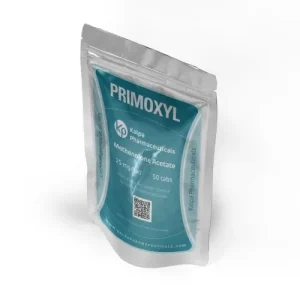 Click Here to Buy Primoxyl 25 by Kalpa Pharmaceuticals
Click Here to Buy Primoxyl 25 by Kalpa Pharmaceuticals
Some peptides can inadvertently lead to fat gain due to their effects on metabolism and appetite regulation. Here are a few that bodybuilders might want to avoid or use cautiously:
- GHRP-6 – While it stimulates growth hormone release, it also significantly increases appetite, which can lead to excess calorie consumption and fat gain.
- IGF-1 LR3 – This peptide enhances muscle growth but can also promote fat storage if not carefully managed with diet and training.
- MK-677 (Ibutamoren) – Though technically a growth hormone secretagogue rather than a peptide, it boosts GH levels but often leads to increased hunger and potential fat accumulation.
- CJC-1295 with DAC – While effective for muscle growth, its prolonged GH release can sometimes lead to unwanted fat retention if not paired with a strict diet
Overall
AOD-9604, derived from Growth Hormone, stimulates fat-burning by targeting lipolysis—the breakdown of fat for energy. It delivers these benefits without the additional effects of Growth Hormone, making it more cost-effective. For maximum effectiveness, it should be administered in a fasted state, ideally before bed and again in the morning at 125-250mcg doses. Pairing its use with fasting and fasted cardio can further enhance fat loss. Its sole focus is on improving the body’s ability to burn fat efficiently.
Read More: How Much Do You Know About B-AET? A Fat Burner You’ve Been Missing
Bodybuilding
Understanding Trenbolone-Induced Cough (“Tren Cough”)

Trenbolone, a potent anabolic steroid, can sometimes cause “tren cough”—a sudden and intense coughing episode shortly after injection. Although not exclusive to Trenbolone, it is more commonly associated with this substance due to its highly irritant nature.
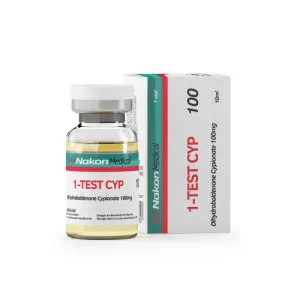 Click Here To Buy 1-Test Cyp 100 by Nakon Medical
Click Here To Buy 1-Test Cyp 100 by Nakon Medical
Mechanisms Behind Tren Cough
Solvent and Carrier Irritation
Trenbolone formulations often include volatile solvents like benzyl alcohol or benzyl benzoate, which may irritate lung tissues when absorbed quickly into systemic circulation.
Prostaglandin Release
Trenbolone promotes increased production of prostaglandins, particularly PGF2α. This compound triggers contraction in the smooth muscles of the lungs, leading to bronchoconstriction and coughing.
Micro-Oil Embolism
Tiny oil droplets from an injection can reach capillaries and travel to the lungs, causing mild embolic reactions that lead to temporary oxygen deprivation and coughing.
Histamine and Mast Cell Activation
For some individuals, Trenbolone triggers histamine release and mast cell activation, mimicking an allergic response and causing bronchospasms and cough reflexes.
Related Article: Best Syringes for Steroid Injection on Amazon
Using Salbutamol (Albuterol) to Manage Tren Cough
- Salbutamol, a widely-used β2-adrenergic receptor agonist, can alleviate tren cough symptoms by:
- Relaxing bronchial muscles, easing spasms that cause coughing.
- Inhibiting prostaglandin effects, reducing bronchoconstriction associated with PGF2α.
- Opening airways, preventing severe respiratory restrictions in susceptible individuals.
Application Methods
Inhaler (Optimal)
Take 1–2 puffs of salbutamol (100–200 mcg) 5–10 minutes before a Trenbolone injection. If coughing occurs afterward, additional puffs can swiftly resolve the issue.
Oral Tablets (Moderate)
Consuming 2–4 mg tablets 30–60 minutes before injection offers slower, longer-lasting relief but may be less effective than inhalation methods.
Nebulizer (Severe Cases)
For individuals with frequent episodes, nebulized doses of 2.5 mg salbutamol can provide substantial relief.
Preventive Measures to Reduce Tren Cough Risk
- Inject slowly to minimize systemic absorption and irritant effects.
- Split doses to lower reaction severity with smaller quantities.
- Opt for ventrogluteal injection sites, which have fewer blood vessels, reducing oil embolism risk.
- Choose lower-concentration solutions to lessen irritation, as higher concentrations (e.g., Tren Ace 200 mg/ml) are more likely to provoke reactions.
What Other Steroids Can Induce Coughing?
Here's a curated list of peptides, SARMs, and PEDs that may potentially cause coughing or respiratory irritation in bodybuilders and fitness enthusiasts:
Peptides
IGF-1 LR3 (Insulin-like Growth Factor): Known for its anabolic effects, IGF-1 LR3 can occasionally cause mild respiratory irritation due to systemic absorption.
TB-500 (Thymosin Beta-4): While rare, improper injection techniques or high doses may lead to transient coughing episodes.
GHRP-6 (Growth Hormone-Releasing Peptide): This peptide can stimulate histamine release, potentially leading to bronchospasms and coughing.
SARMs (Selective Androgen Receptor Modulators)
RAD-140: (Testolone) Some users report throat irritation or coughing, often attributed to solvents used in liquid formulations.
YK-11: Known for its myostatin-inhibiting properties, YK-11 may cause mild respiratory discomfort in sensitive individuals.
LGD-4033 (Ligandrol): Though uncommon, some users experience coughing due to carrier solvents or allergic-like reactions.
PEDs (Performance-Enhancing Drugs)
Boldenone Undecylenate (Equipoise): This injectable steroid can cause “Equipoise cough,” similar to tren cough, due to oil embolism or irritant solvents.
Testosterone Suspension: The water-based formulation may lead to coughing episodes if injected improperly or absorbed rapidly.
Nandrolone Decanoate (Deca-Durabolin): While less common, coughing can occur due to histamine release or systemic irritation.
More Tips to Minimize Coughing Risks
- Use proper injection techniques to avoid embolic reactions.
- Opt for lower-concentration solutions to reduce irritant effects.
- Consider antihistamines or bronchodilators for individuals prone to respiratory sensitivity.
Read More: Joint Stiffness: How to Manage It While on AAS
Are There Alternatives to Cough-inducing Steroids?
Here are some alternatives to cough-inducing steroids that can provide similar anabolic effects while minimizing respiratory irritation:
Peptides
IGF-1 LR3 (Insulin-like Growth Factor)
Promotes muscle growth and recovery without the irritant properties of certain steroids.
TB-500 (Thymosin Beta-4)
Enhances tissue repair and reduces inflammation, making it a safer option for recovery.
BPC-157 (Body Protection Compound)
Known for its healing properties, it supports muscle repair and joint health.
SARMs (Selective Androgen Receptor Modulators)
RAD-140 (Testolone)
Provides significant muscle-building effects with fewer systemic side effects compared to traditional steroids.
LGD-4033 (Ligandrol)
Boosts lean muscle mass and strength without the risk of respiratory irritation.
MK-677 (Ibutamoren)
Stimulates growth hormone release, aiding in muscle growth and recovery.
Natural Alternatives
Turkesterone
A plant-based ecdysteroid that supports muscle protein synthesis and recovery.
Ecdysterone
Another natural compound that mimics anabolic effects without the harsh side effects.
Creatine Monohydrate
Enhances strength and muscle mass through improved energy production during workouts.
Other Options
Human Growth Hormone (HGH)
Promotes muscle growth and fat loss, though it requires careful monitoring due to potential side effects.
Testosterone Boosters
Natural supplements like D-Aspartic Acid or Tribulus Terrestris can help optimize testosterone levels for muscle growth.
SARMs Alternatives
Legal and safer versions of SARMs are available, offering similar benefits without the risks associated with traditional SARMs.
Overall
We have explored the phenomenon of "tren cough," a sudden, intense coughing episode often caused by Trenbolone injections due to factors like solvent irritation, prostaglandin release, micro-oil embolism, or histamine activation. Preventive measures such as using salbutamol (via inhaler, oral tablets, or nebulizer), injecting slowly, splitting doses, and opting for lower-concentration solutions were highlighted.
Additionally, alternative compounds to tren cough-inducing steroids were discussed, including peptides like IGF-1 LR3 and TB-500, SARMs such as RAD-140 and LGD-4033, and natural options like Turkesterone, ecdysterone, and creatine. These alternatives provide anabolic effects while minimizing respiratory side effects. The conversation also underscored the importance of proper injection techniques and thoughtful compound selection to reduce risks.
Steroids
Creatine vs Myostatin: An Expert’s Analysis
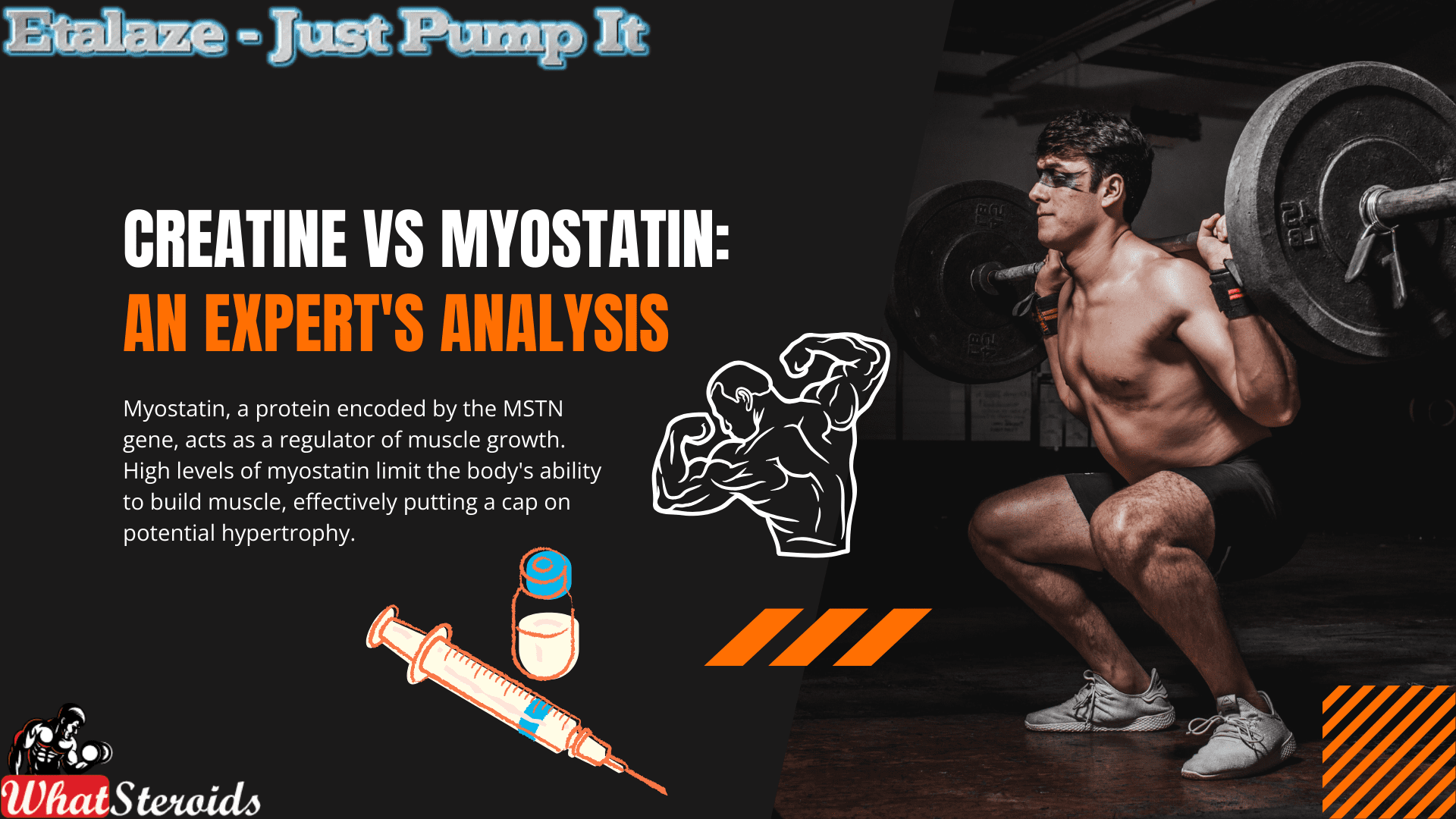
Myostatin, a protein encoded by the MSTN gene, acts as a regulator of muscle growth. High levels of myostatin limit the body's ability to build muscle, effectively putting a cap on potential hypertrophy. Inhibiting myostatin has become a focal point for bodybuilders looking to break through plateaus and achieve significant muscle gains. The question is: can creatine, a popular and widely available supplement, help in this regard?
Medical History of Myostatin and Creatine
Myostatin and creatine, while popular now in the bodybuilding world, have their roots in entirely different contexts:
Myostatin: Natural Muscle Growth Regulator
Myostatin is a protein originally identified for its role in regulating skeletal muscle mass. In nature, it serves an evolutionary purpose: by limiting muscle growth, it conserves energy, ensuring that animals (and humans) don’t expend unnecessary resources maintaining excessive muscle tissue. This was especially important in the wild, where energy efficiency could mean the difference between survival and extinction.
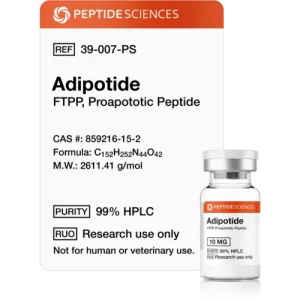 Check Adipotide (FTPP) 10mg by Peptide Science
Check Adipotide (FTPP) 10mg by Peptide Science
In the medical field, research into myostatin has focused on its role in muscle-wasting diseases. Scientists are exploring ways to inhibit myostatin to treat conditions like muscular dystrophy, where excessive muscle loss impairs quality of life. This therapeutic potential is where the idea of myostatin inhibition first began—long before bodybuilders latched onto the concept.
Creatine: Energy and Medical Applications
Creatine was originally studied for its role in energy metabolism. It’s a naturally occurring compound stored in muscle cells and plays a critical part in replenishing ATP (adenosine triphosphate), the body’s primary energy currency during short, high-intensity activities.
Before becoming a bodybuilding staple, creatine gained recognition in medical and sports science for its ability to improve athletic performance and assist with recovery. Furthermore, in medicine, creatine was investigated for neurological conditions such as Parkinson’s disease, Huntington’s disease, and muscular dystrophy, given its potential to improve muscle function and brain energy metabolism.
In the sports world, it was initially adopted by sprinters and weightlifters in the 1970s and 1980s for its energy-enhancing benefits.
Both myostatin and creatine have found new life in bodybuilding circles, demonstrating how discoveries in natural physiology and medical science can lead to transformative applications in fitness.
Benefits of Creatine as a Myostatin Inhibitor
Muscle Growth Potential: Research suggests that creatine, when paired with intense resistance training, may inhibit myostatin to a degree, fostering an environment for enhanced muscle growth.
Improved Exercise Performance: Creatine is well-known for its ability to increase ATP production, translating to better performance during high-intensity activities.
Versatility Across Fitness Levels
Whether you're a beginner or an advanced athlete, creatine offers benefits that complement various stages of muscle-building.
Must Read: A New Caffeine? What You Need to Know about Teacrine
Affordability and Accessibility
Compared to specialized myostatin inhibitors like YK-11 and ACE-031, creatine is significantly more affordable and accessible.
Side Effects of Creatine
While generally safe for most individuals, creatine supplementation does come with some potential side effects:
Water Retention: Some users experience bloating due to increased water retention in muscle cells.
Gastrointestinal Issues: High doses may lead to stomach upset or diarrhea.
Kidney Concerns: Although rare, prolonged excessive use could strain the kidneys, particularly in individuals with pre-existing conditions.
 Buy Methyl-1-Test 10 -100 tabs by Dragon Pharma
Buy Methyl-1-Test 10 -100 tabs by Dragon Pharma
Alternatives to Creatine for Myostatin Inhibition
YK-11: A synthetic myostatin inhibitor derived from SARMs, offering more potent results but accompanied by more significant risks.
ACE-031: A peptide that directly inhibits myostatin, though it remains in experimental phases and is not legally approved in many regions.
Natural Alternatives
Follistatin-rich Foods: Eggs and dairy products may have natural myostatin-inhibiting properties.
Resistance Training: Intense and consistent weightlifting alone can naturally lower myostatin levels.
Where to Buy Creatine
Creatine is readily available worldwide. It can be purchased from:
Local Pharmacies and Nutrition Stores: Ideal for trusted and immediate access.
Online Platforms: Websites like Amazon, iHerb, or bodybuilding-specific stores offer a variety of brands and formulations.
Supplement Brands: Well-established brands such as Optimum Nutrition, MyProtein, and Cellucor often carry high-quality creatine.
Legality of Myostatin Inhibitors
Creatine: Creatine is completely legal and widely accepted as a dietary supplement.
YK-11 and ACE-031: These compounds exist in a legal gray area in many countries due to their experimental nature and potential risks. It's essential to research local laws before considering these options.
Best Stores and Suppliers
For reputable products, consider:
Transparent Labs: Known for purity and transparent labeling.
Optimum Nutrition: Offers pharmaceutical-grade creatine monohydrate.
Bulk Supplements: A great choice for bulk buyers seeking affordability and quality.
Our Advice to Bodybuilders
Always consult with a healthcare professional before starting any new supplement, especially if you are already using AAS or other advanced compounds.
Prioritize a balanced diet and consistent exercise routine. Supplements like creatine work best as part of a holistic approach to fitness.
Stay hydrated while using creatine to minimize water retention side effects and support kidney health.
Related Article: Best Syringes for Steroid Injection on Amazon
Overall
While creatine may not be as potent a myostatin inhibitor as advanced compounds like YK-11 or ACE-031, its affordability, safety, and accessibility make it a valuable addition to any bodybuilder's supplement stack. By leveraging its benefits alongside proper training and nutrition, you can maximize muscle growth and overcome plateaus, regardless of your fitness level.
-
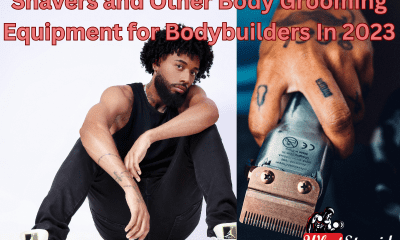
 Steroids2 years ago
Steroids2 years agoShavers and Other Body Grooming Equipment for Bodybuilders In 2023
-

 Steroids2 years ago
Steroids2 years agoChatGPT and Other Avenues to Find Great Bodybuilding Coaches
-
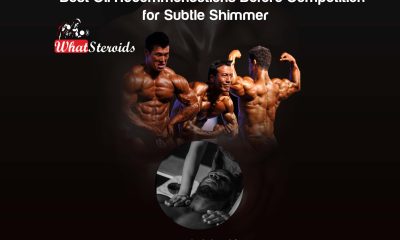
 Steroids2 years ago
Steroids2 years agoBest Oil Recommendations Before Competition for Subtle Shimmer
-
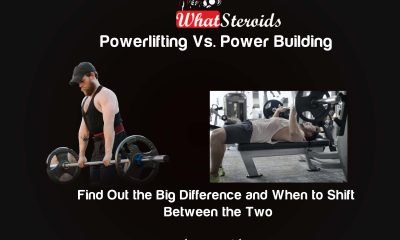
 Steroids2 years ago
Steroids2 years agoPowerlifting Vs Power Building: Find Out the Big Difference and When to Shift Between the Two
-
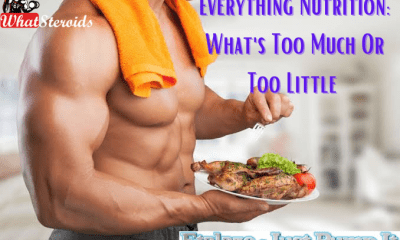
 Nutrition1 year ago
Nutrition1 year agoEverything Nutritional Food: What’s Too Much Or Too Little
-
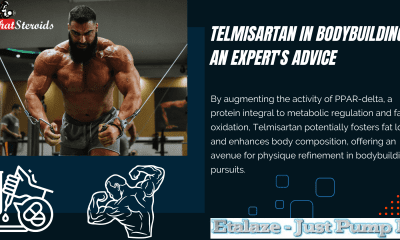
 Bodybuilding Products1 year ago
Bodybuilding Products1 year agoTelmisartan In Bodybuilding: An Expert’s Advice
-

 Anabolic Steroids1 year ago
Anabolic Steroids1 year agoLegality of Anabolic Steroids In Latin America
-
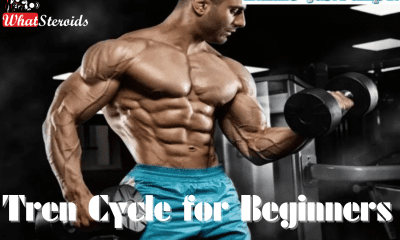
 Beginners2 years ago
Beginners2 years agoTren Cycle for Beginners
-

 Bodybuilding1 year ago
Bodybuilding1 year agoList of FDA-Approved Peptides
-

 Bodybuilding1 year ago
Bodybuilding1 year agoChia Seeds in A Bodybuilder’s Diet: An Expert’s Advice
-
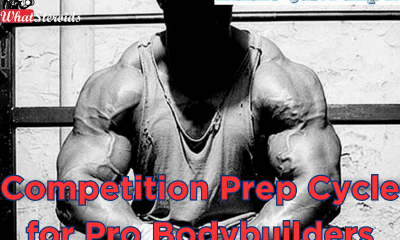
 Bodybuilding2 years ago
Bodybuilding2 years agoCompetition Prep Cycle for Pro Bodybuilders
-
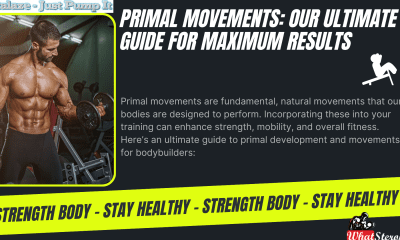
 Bodybuilding8 months ago
Bodybuilding8 months agoPrimal Movements: Our Ultimate Guide for Maximum Results
-

 Anabolic Steroids9 months ago
Anabolic Steroids9 months agoJoint Stiffness: How to Manage It While on AAS
-
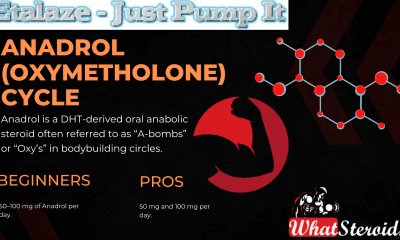
 Steroids12 months ago
Steroids12 months agoAnadrol Cycle: Benefits, Doses, Alternatives, etc.
-

 Bodybuilding8 months ago
Bodybuilding8 months agoHow Effective is Bone Broth for Recovery?
-

 Steroids10 months ago
Steroids10 months agoOmnitope (Oxytocin)
-

 Bodybuilding1 year ago
Bodybuilding1 year agoHow Much Is Too Much Cardio? Understanding Heart Rate Zones
-

 Anabolic Steroids11 months ago
Anabolic Steroids11 months agoHow Much Do You Know About B-AET? A Fat Burner You’ve Been Missing
-

 Steroids9 months ago
Steroids9 months agoSleeping Positions for Effective Muscle Recovery
-

 Bodybuilding1 year ago
Bodybuilding1 year agoCalorie Dumping: A Bodybuilder’s Guide
-

 Product Reviews11 months ago
Product Reviews11 months agoTop Vitamins for Skin Health
-

 Bodybuilding8 months ago
Bodybuilding8 months ago2nd Edition of Natural Bodybuilding Competition Facts
-

 Bodybuilding1 year ago
Bodybuilding1 year agoDemystifying Hypertrophy Training
-

 Bodybuilding8 months ago
Bodybuilding8 months agoAre Nootropics a Better Option to AAS?
-

 Steroids11 months ago
Steroids11 months agoMajor Bodybuilding Peptides Explained
































